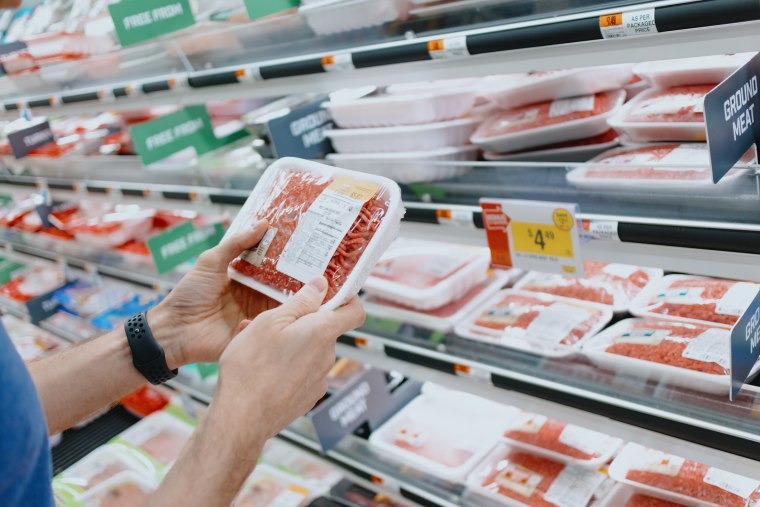By Jill Roberts -
The Conversation
Since the first cases were reported in January, a listeria outbreak in Florida has killed one person, hospitalized 22 others and recalled a brand of ice cream.
People get sick with listeria infections, or listeriosis, by eating soil-contaminated food, undercooked meat, or raw or unpasteurized dairy products.
Listeria can cause seizures, coma, miscarriages, and birth defects and is the third leading cause of food poisoning deaths in the United States.
Consumers often check expiration dates to avoid these hidden dangers in food.
Along with the month and year, phrases such as: "consume before", "use before", "preferably consume before", "fresh until", "freeze until" are usually printed and even the indication "born in" that is applied to some beers.
People interpret them as the expiration date or the day they should throw the food away, but
they have little to do with the expiration of the food or when it is no longer safe to eat
.
I am a microbiologist and public health researcher and I use molecular epidemiology to study the spread of bacteria in food.
A more science-based date system could help people differentiate those foods that are safe to eat from those that are dangerous.
A costly mess
The United States Department of Agriculture (USDA, for its acronym in English) reported that
in 2020
the average household spent 12% of its income on food
, but many of those foods are thrown away despite being safe for consumption.
The USDA Center for Economic Research indicated that nearly 31% of all available food is never eaten.
High product prices make this waste even more alarming.
Mysterious listeria outbreak leaves one person dead and 22 hospitalized in 10 states of the country
July 1, 202200:25
The current labeling system could be to blame for this waste
.
The Food and Drug Administration (FDA) revealed that consumer confusion about expiration dates on labels is responsible for 20% of food lost, or an estimated $161 billion each year .
It stands to reason that dates on labels exist for safety reasons, since the federal government has established rules that require ingredients and nutritional information to be included on labels.
A more science-based date system could help people differentiate between foods that are safe to eat and those that are dangerous."
Jill Roberts microbiologist and researcher
Passed in 1938 and continually amended since then, the Food, Drug, and Cosmetic Act requires food labels to tell consumers about the ingredients and nutrition facts in packaged foods, such as the amount of salt, sugar, and fat they contain .
However,
dates on packages are not regulated by the FDA
but rather come from manufacturers and may not be based on food safety science.
[Millions of Pounds of Frozen Chicken Recalled Due to Possible Listeria Contamination]
For example, a food manufacturer might interview a group of consumers and determine that the expiration date is six months from when the product was made based on the fact that 60% of the people questioned no longer liked the taste after that moment.
Smaller businesses of a similar food could take that as a reference and put the same date on theirs.
Other interpretations
One group in the industry, the Food Marketing Institute and the Grocery Manufacturers Association, suggests its members mark foods with "best before" to indicate how long the food will be safe and "use by" to point out when they are dangerous, but implementation of these more precise labels is voluntary.
Although the recommendation is motivated by the desire to reduce waste, it is not clear if this change has had any impact.
Sausages are one of the products that experts recommend paying special attention to. Grace Cary / Getty Images
A joint study by the Harvard Food Law and Policy Clinic and the National Resources Defense Council suggests removing dates for consumers, citing potential confusion and waste.
Instead, the research recommends manufacturers and distributors use “production” or “pack” dates alongside “use by” dates, aimed at supermarkets and retailers that will tell them how long a quality product will remain.
The FDA considers some foods “potentially hazardous” if they have characteristics that allow microbes to grow, such as moisture and the abundance of nutrients that feed them.
These include chicken, milk and sliced tomatoes, which have been linked to serious outbreaks of food contamination, but there is currently no distinction between the labels on these types of products and those used on more durable ones.
scientific formulas
Baby formula is the only food with an expiration date that is regulated by the government and scientifically determined, as it is periodically subjected to routine laboratory tests to confirm that it is not contaminated.
This product is also tested to determine how long it takes for nutrients—particularly protein—to break down.
To prevent malnutrition in babies, the suggested expiration date indicates when it is no longer nutritious
.
Three Precautions Parents Can Take in the Face of Baby Formula Shortages
May 10, 202200:36
Nutrients in food are easy to measure.
The FDA already does this regularly.
The agency issues warnings to manufacturers when the nutrient table in their products does not match the findings of their laboratories.
Microbial studies, like those that food safety researchers work on, are also a scientific approach to effective labeling of consumer products.
In our labs, one of them might be letting a perishable food go bad and measuring how much bacteria grows on it over time.
[At least one death and 22 hospitalizations due to listeria outbreak in 10 states of the country]
Scientists also do other kinds of microbial research by looking at how long it takes for microbes like listeria to grow to dangerous levels, noting details like the growth of bacteria over time and when there are enough of them to cause illness.
Consumers are on their own
Determining the shelf life of food with scientific data on its safety and nutritional value could dramatically reduce waste and help save money, especially now that food is getting more expensive.
But in the absence of a uniform labeling system, consumers can rely on their eyes and nose to decide whether to throw out that questionable-looking bread, those green cheeses or that bag of salad that no longer smells good.
People should also
pay special attention to expiration dates for perishable foods
, such as luncheon meats, where microbes grow easily, and if in doubt, guidance can be found at FoodSafety.gov.


/cloudfront-eu-central-1.images.arcpublishing.com/prisa/2YU22TQLBFE6RNDZLB44QR47GU.jpg)





